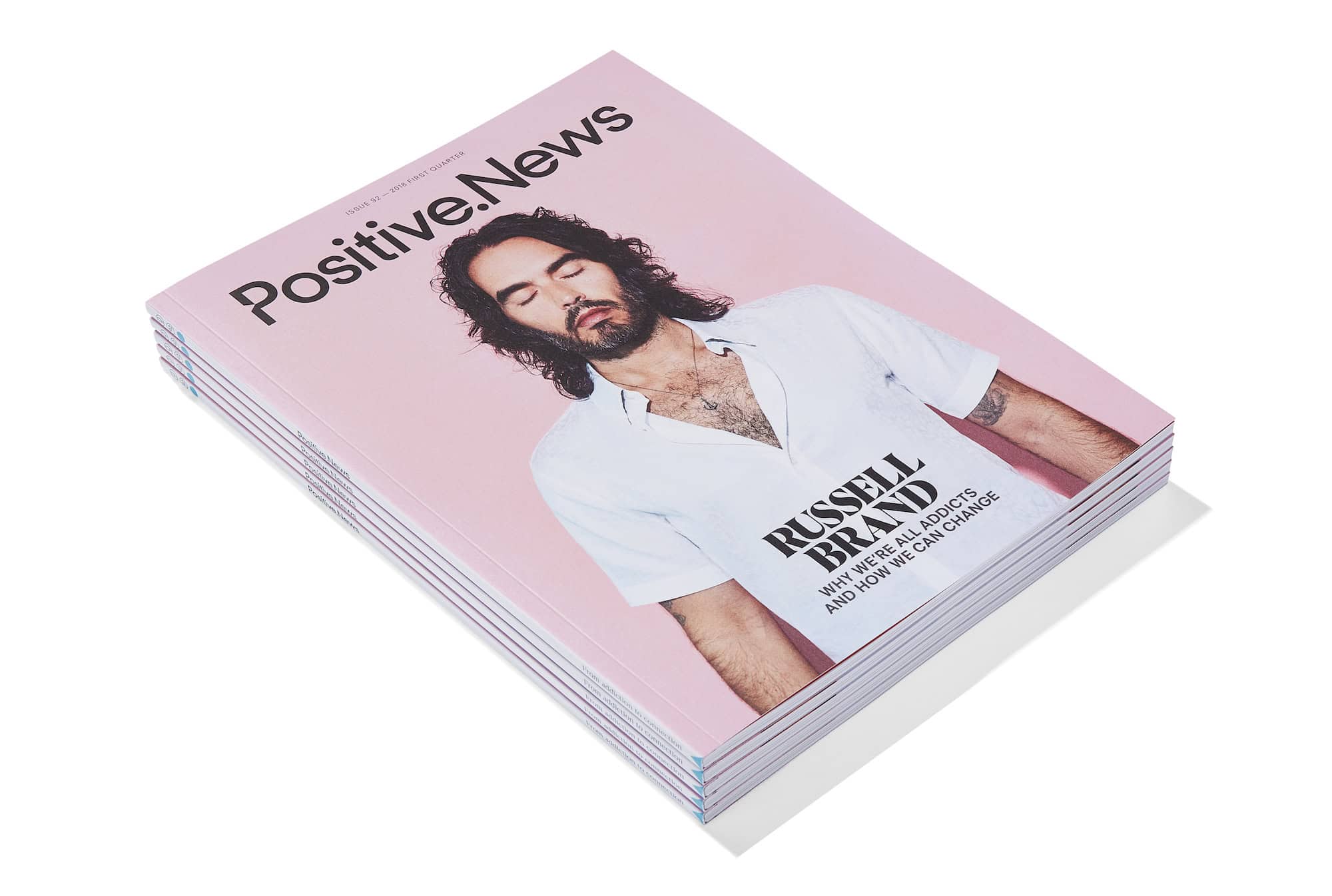Anne Berit Anti’s designs are inspired by the remote Norwegian landscape. Through fashion, she also aims to raise awareness of her people: the indigenous Sami
North of the Arctic Circle, the Norwegian landscape is snow-swept, vast and crossed by few roads. It is also home to the Sami, one of the northernmost indigenous people of Europe.
A short drive from the town of Karasjok, which hosts Norway’s Sami parliament and the Sami National Museum, lives Anne Berit Anti. She is Sami, and tells stories of her people through her fashion brand, Abanti.
Anti graduated in 2011 from Norway’s top fashion school in the capital, Oslo. “After an education like that, people usually go to London or Paris,” she laughs. “I was a bit weird: I went home to a region of 3,000 people. But if we don’t live here, there will be no culture.”
Discover a world of inspiration.
Subscribe to Positive News magazine
She is well aware of her people’s troubled history: the Sami have been discriminated against, abused and threatened frequently. They now number somewhere between 60,000 and 100,000, the majority living in Norway but also in Sweden, Finland, and a few thousand in Russia. In the past, states have sought to incorporate the Sami into their economies through heavy taxation sometimes nomadic reindeer herders were forced to pay out to multiple countries at once as borders fractured their homelands.
Even relatively recently, only those who spoke Norwegian and had a Norwegian family name were allowed to own land.

Anne Berit Anti hopes her designs will appeal to everyone, regardless of their heritage
Improvements in Sami rights have come about only through struggle, including protests against a dam proposed for the Alta river – a site important to the Sami for salmon fishing – and hunger strikes in Oslo in 1979.
The Sami are still fighting for rights and recognition, notes Anti. It is difficult to access healthcare and other services in the Sami language, and many Sami still carry a burden of shame from the assimilation years. Many express fear that the remaining Sami are being steadily ‘Norwegianised’ and, of course, climate change threatens their traditional homeland too.
“We have a lot of things still to do. My way is design, so people get to know the Sami. I also try to tell people how important it is to show your Sami identity.”

Before becoming a fashion designer, Anti was a news reporter. But she felt the urge to do something different. One day, she was following her family’s reindeer from their winter grazing areas to the summer lands when she was suddenly hit by inspiration.
“I sat on my snowmobile and saw the beautiful nature – big mountains, white tundras – and the dresses just came and I had to start designing. I had never thought about it in that way before.”
She works with her partner – in business and love – fellow designer Kim Anders Vuolab, and their style straddles Sami and western worlds. “Everybody who is Sami sees that my patterns are Sami design. But elsewhere, people might not know,” notes Anti.
I sat on my snowmobile and saw the beautiful nature – big mountains, white tundras – and the dresses just came and I had to start designing
Many of the clothes in Abanti’s shop, which is located in a barn in the couple’s garden, feature figures of reindeer, or Sami tents called lavvus. Sometimes the interplay between the design and tradition is more subtle: traditional Sami costumes include woven ponchos (luhkka in Sami), so Anti makes hers in knitted fabric. Large, traditional brooches have found their way to her shawls and clothes as print rather than a piece of jewellery.
Though her designs celebrate Sami identity, Anti wants her clothes to be worn by everyone. Since university, she has used models from different backgrounds. “I like to mix, to show that it’s OK to be from another culture.”
Featured image: Tor Ivan Boine. Other images: Steffen Oftedal
